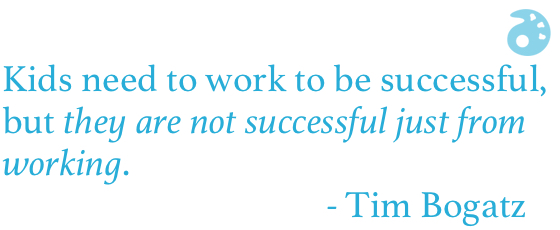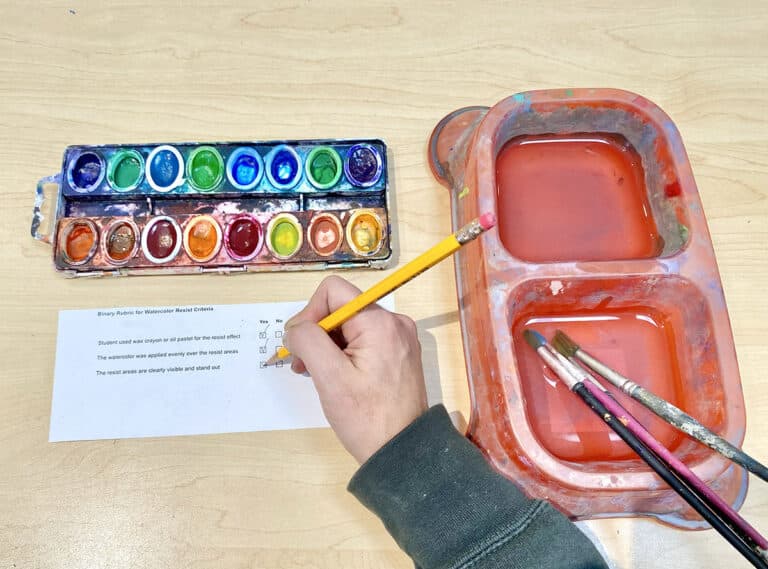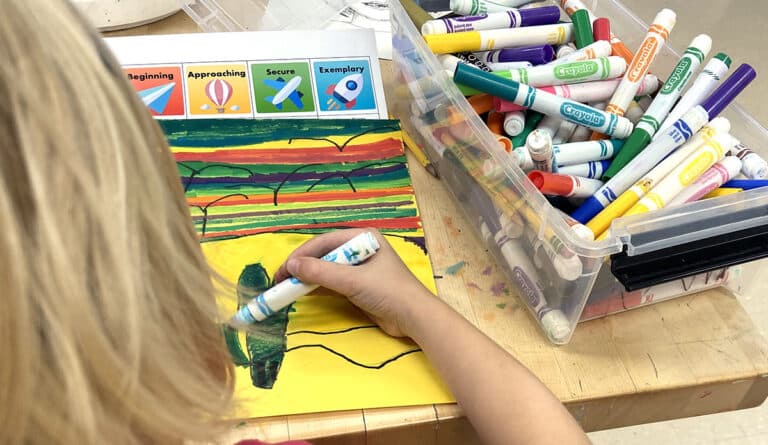I’m sitting there staring at my grade book and this one grade is just staring back at me. It’s a C-, and that grade bothers me because it just doesn’t feel right. I think the kid should have a C because they’re respectful, we haven’t had any behavior issues, and they’re always working hard. Can behavior push that grade up? Should it?
If I change the grade to a C, what is that grade then saying? Is that grade even valid?
What is the problem with grading behavior?
As teachers, it is imperative that we separate behavior and grades. There are far too many teachers, especially in studio classes, who give out a daily grade for participation or effort, or just for good behavior. I have never understood the thinking behind that strategy–how does behavior relate to grading? Student behavior is a classroom management issue, not a grading issue. You should never find management strategies and solutions in your grade book.

We want our kids to work hard, be respectful, and be on time. But why do we use grades to incentivize the behaviors we want? If your answer is “that is how I get them to do what I need them to do,” you need to reevaluate your classroom management system.
Daily effort and participation points are particularly troublesome. How can you define them clearly? How can you measure them accurately? Those daily points are a double benefit for our kids who behave well. They are earning free points just for doing what they would do anyway. Even worse, those points are a double penalty for those who sometimes don’t behave as well. These types of points make it even more difficult for the kids who struggle to find success.
Why is it important to keep grading objective?
When you are giving participation grades, you are taking away both meaning and validity from the grades you give. Grading should be objective–you have standards for each project, right?–and those are the grades that should be presented because they are the grades that represent what your kids know and can do. “Effort” is not a standard, and it cannot be objectively assessed. Simply trying hard, while admirable, in no way represents what is actually being learned.

When we assign a grade to the effort put forth, we are artificially inflating grades. They no longer represent what our students have learned. Kids and parents then both have an impression that students are doing better than they really are. Objective, meaningful grades show what a kid has learned and what they can do– never how nice they are, how well they sit in their seat, or how much time they spent on their project.
How do you encourage participation without grading participation?
None of this is to say that these behaviors are not valued; in fact, quite the opposite. I think, and I believe most art teachers would agree, that effort plays a major role in a student’s success. But there is so much more to art than just effort, and so much more to learn than just how to play school. Kids need to work to be successful, but they are not successful just from working.

We want to encourage that effort and encourage a growth mindset, but we don’t need to grade it. Talk during critiques about how you appreciate the hours they put in outside of school, or how they kept reworking one area until they got it right. Show kids how much better colored pencil looks when you put in the time to layer and blend. Demonstrate what is possible–and how artwork can improve–when significant time and effort are put forth. Praise effort on the bottom of the rubric; just don’t make it part of the rubric.
We need to assess our kids in a myriad of ways, but participation grades should never enter into the equation. We can value and encourage the behaviors, but they don’t need daily points attached. Because really, when you think about it, how do you know what kids have learned–whether your instruction was effective—if you’re giving a grade based on whether your kids used the time wisely?
If you’re looking for classroom management strategies that go beyond the grade book, check out the AOEU class, Managing the Art Room. The class is packed full of creative and useful management tips that you can implement right away.
Do you grade for participation or time on task? Why?
What would happen in your classroom if you were to do away with participation grades?
Magazine articles and podcasts are opinions of professional education contributors and do not necessarily represent the position of the Art of Education University (AOEU) or its academic offerings. Contributors use terms in the way they are most often talked about in the scope of their educational experiences.




